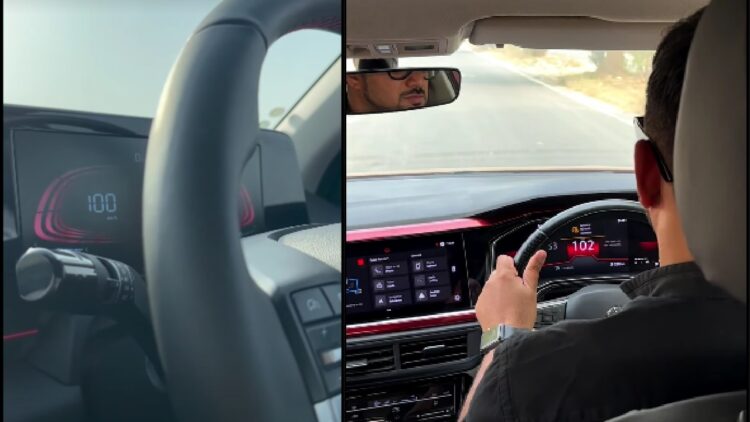We recently performed a 0-100 km/h acceleration test of the Hyundai Verna 1.5 turbo petrol and the VW Virtus GT 1.5. The latest addition to the premium mid-size sedan segment in our market is the new Verna. The Korean carmaker has implemented comprehensive updates to its aesthetics, cabin, and powertrain. In contrast, the Virtus remains a favoured option for those who appreciate the driving dynamics of the German carmaker. This video will showcase who is faster in a straight line.
You may also like: 2023 Hyundai Verna 1.5 MPi Acceleration Test – VIDEO
Hyundai Verna vs VW Virtus Acceleration Test
First, we got behind the wheel of the Verna. It is the most powerful sedan in the segment with its new 1.5-litre turbo petrol mill. After doing multiple rounds, we were able to achieve an average acceleration time of 7.21 secs for the 0-100 km/h sprint. It was able to clock the 0-120 km/h in 10.21 secs. On the other hand, our testing shows a 0-100 km/h acceleration time for the Virtus GT of 9.72 secs. It was able to reach 120 km/h in 13 seconds. Therefore, the Verna is evidently the quicker of the two.
You may also like: 2023 Ford Endeavour V6 0-100 km/h Acceleration Tested
Specs Comparison
In this contest, the 2023 Hyundai Verna is equipped with a robust 1.5-litre turbo petrol GDi engine, producing 160 PS and 253 Nm of peak power and torque. This engine is coupled with a 7-speed DCT automatic gearbox. Conversely, the VW Virtus featured in this video is powered by a 1.5-litre turbo petrol engine that delivers a formidable 150 PS and 250 Nm of peak power and torque. It comes paired with a sporty 7-speed DCT automatic gearbox.
| Specs | Hyundai Verna | VW Virtus |
| Engine | 1,5-litre turbo petrol | 1.5-litre turbo petrol |
| Power | 160 PS | 150 PS |
| Torque | 253 Nm | 250 Nm |
| Transmission | 7-speed DCT | 7-speed DCT |
You may also like: Parked VW Virtus Starts Moving on Its Own, Crashes Into Other Vehicle – What’s Happening?
You may also like: Hyundai Verna Outsells Honda City, Skoda Slavia and VW Virtus
What We Think
The acceleration times of cars depitct how quick they are in a straight line. While we don’t normally drive vehicles in this manner everyday, it is the most common and effective strategy to compare the performances of two cars. Having said that, we perform such activities under controlled environments. As a result, we urge our readers to never imitate these yourself on public roads. Things could turn dangerous in no time. We do such activities so that you get the information your are looking for and don’t have to jeopardise your own safety.


